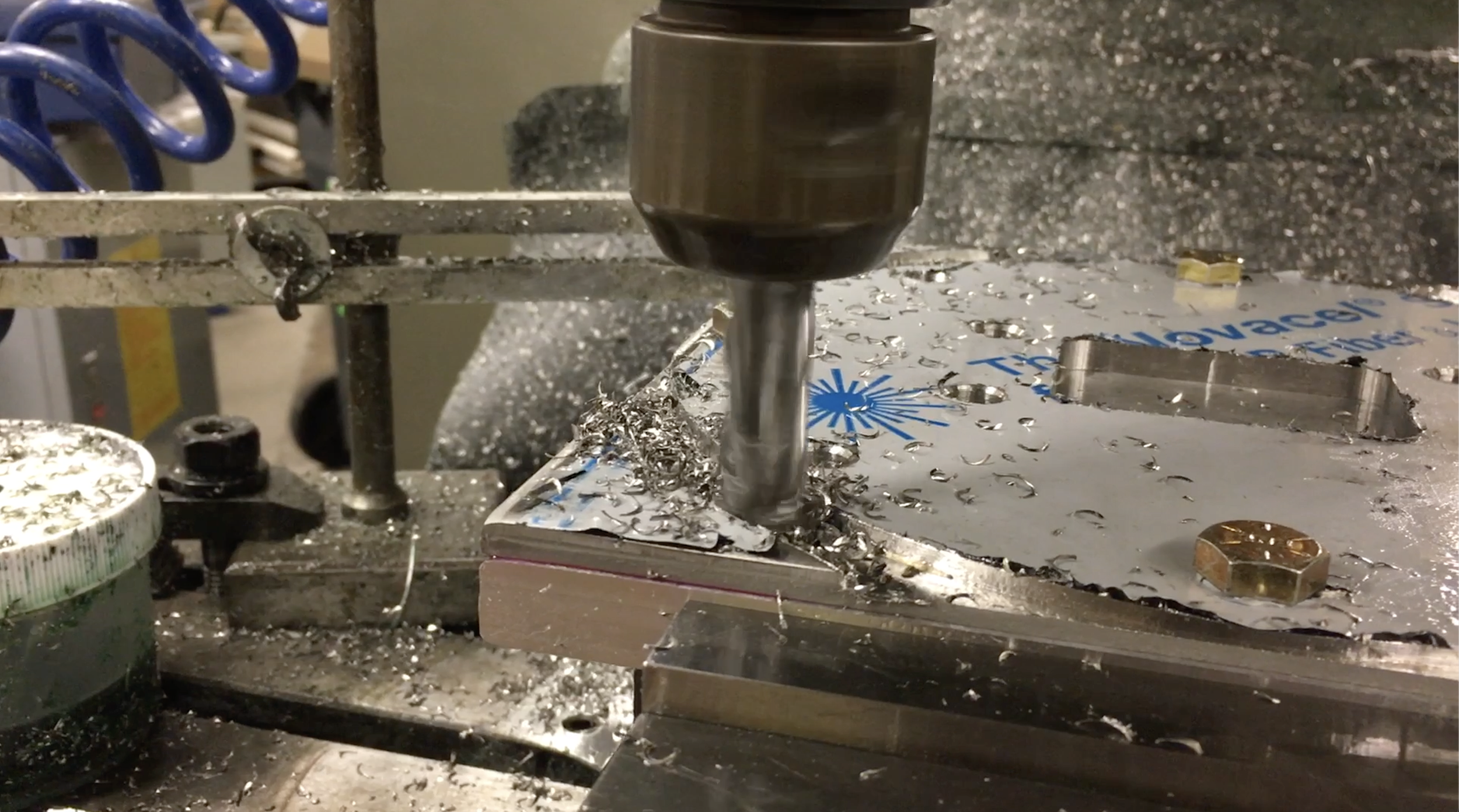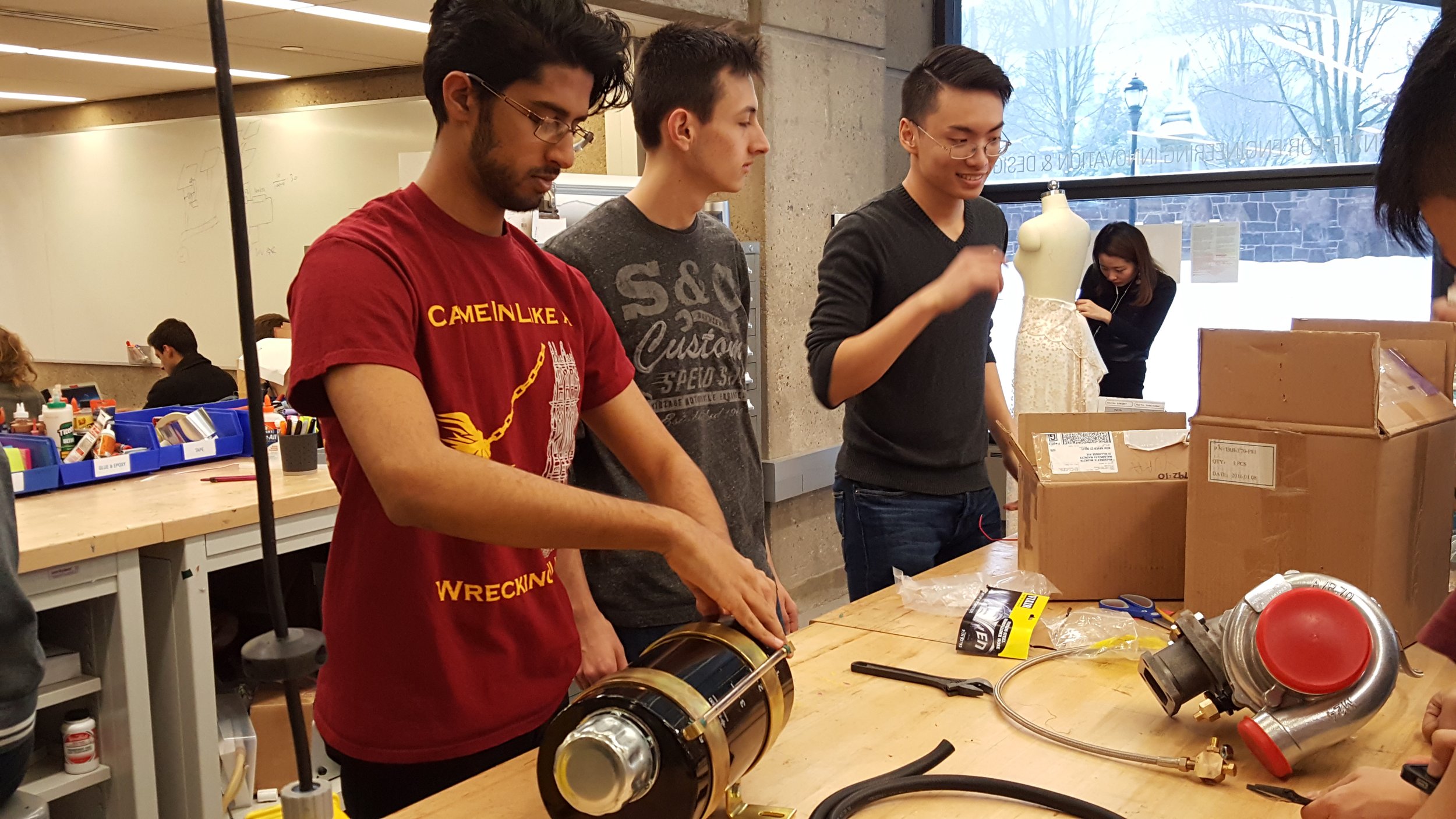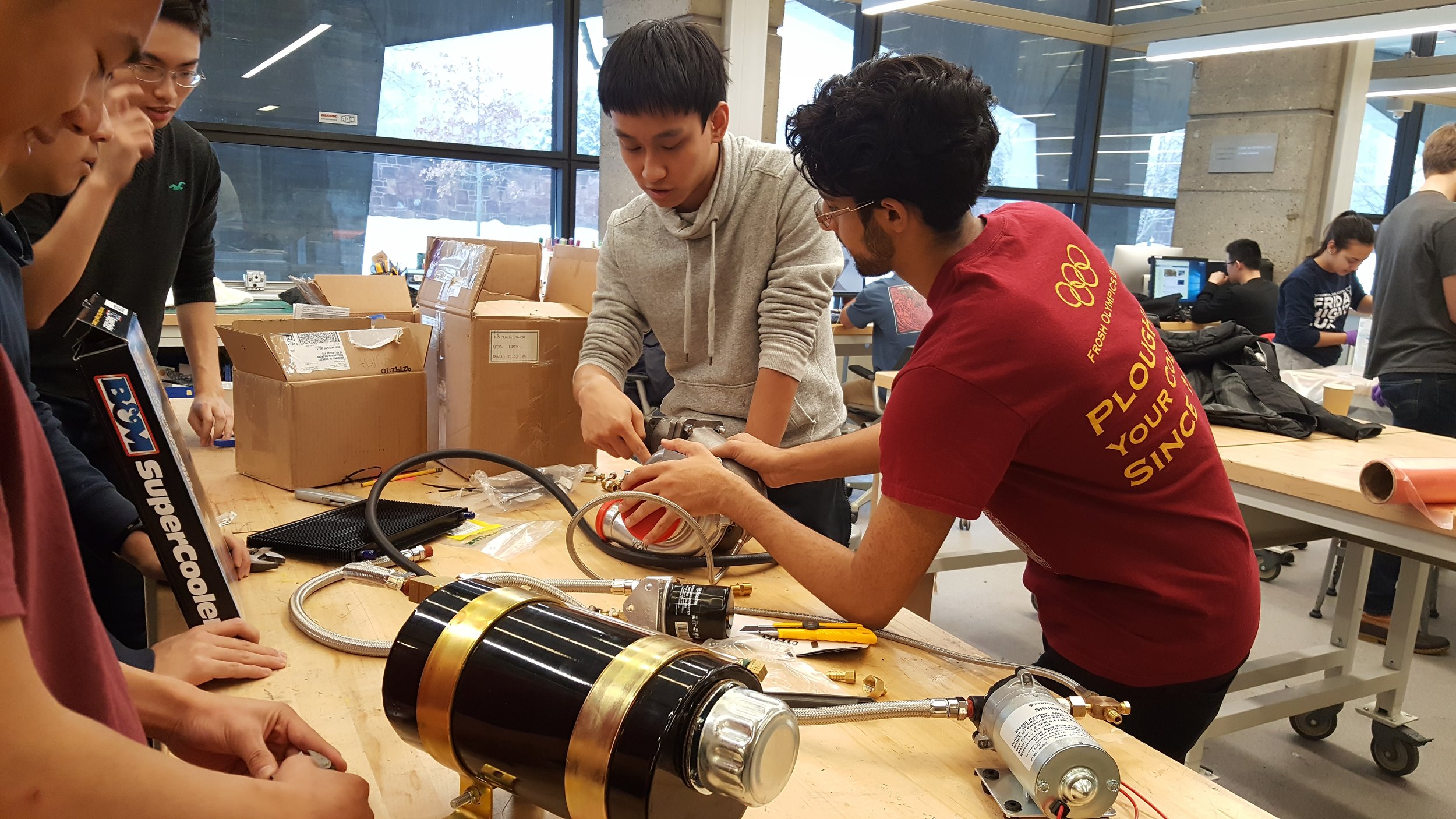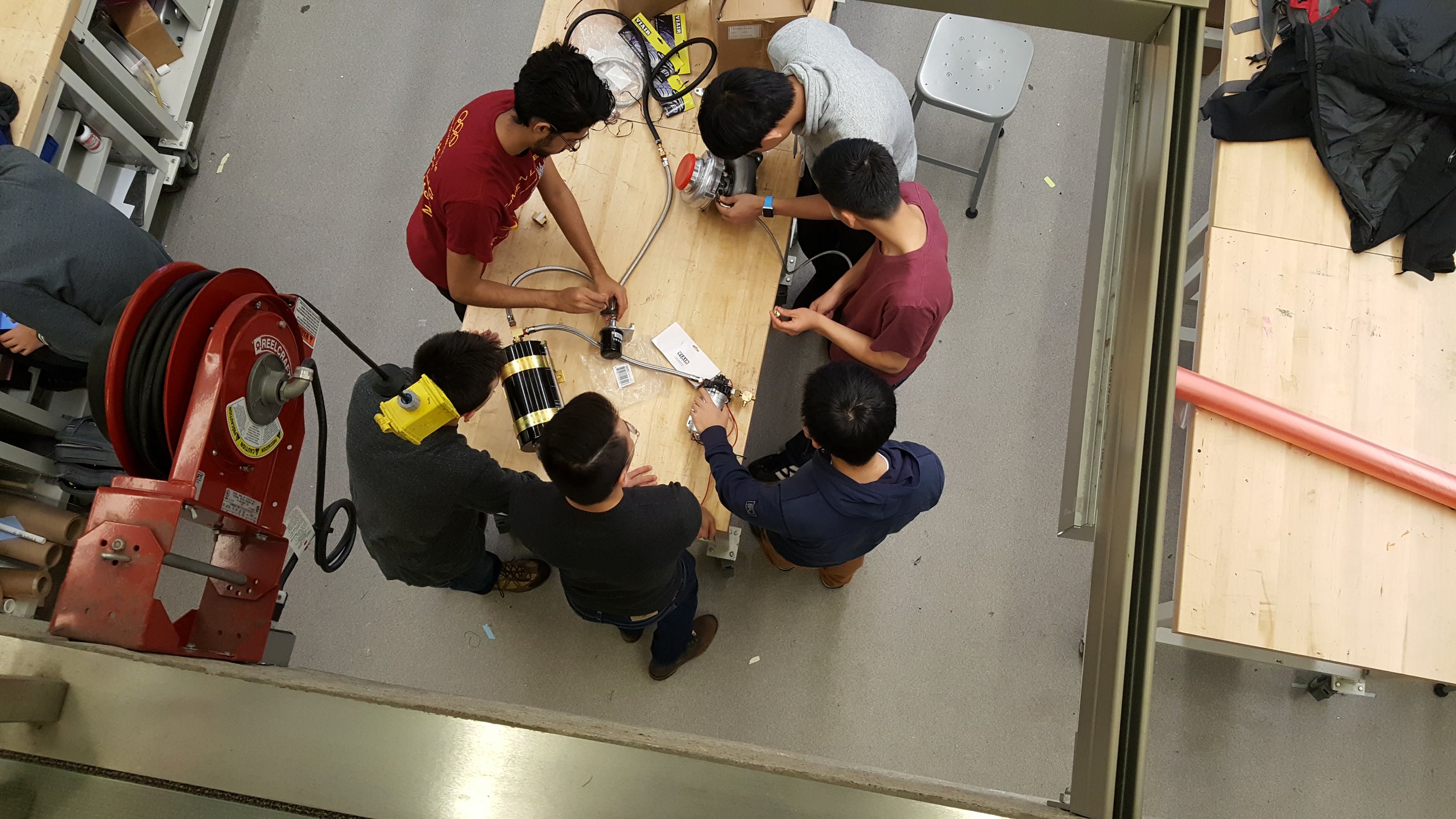Turbojet Engine
The YUAA decided to continue its foray into custom propulsion by researching, designing, building, testing and optimizing a small centrifugal flow turbojet engine capable of sustained combustion, complete with built-in starters, sensors, fuel supply system, and thrust measuring equipment. YUAA had never built a turbojet engine before, and the YUAA members were very excited to move ahead with the project. While the team was unable to wrap up their project with an an ample testing window at the end of the school year, future endeavors such as Project Liquid would carry on the torch of experimental propulsion.
Old-style airplane engines are piston-propeller internal combustion engines that, while able to provide sufficient thrust for low speed, low altitude cruising, fail to support ever-increasing demand of airplane performance. Such a demand for engines with higher thrust-to-weight ratio and less structural complexity has been met with the arrival of jet engines.
The very first generation of jet engines was the turbojet, in which air is forced through a series of axial or centrifugal flow compressor stages to gain enough pressure and temperature before being mixed with fuel and ignited. The heated flow of high-pressure exhaust then goes through stages of turbines (which can be thought of as the compressor blades reversed) to extract a fraction of the energy to drive the compressors before being ejected rearward to produce thrust. In this way, the turbojet can produce very high thrust at very low resistance, bulk weight, and high rpm.
Members worked on designing and constructing the engine. Since this project was both challenging and new to YUAA, Turbojet members learned skills and gained experience invaluable for the wider aerospace community. Members dove into welding and machining, putting the product closer to its final shape.
As of March 2017, the team wrapped up the machining part of building this engine with the help of Mr. Nicholas Bernardo in the student machine shop of Yale School of Engineering and Applied Science. The next step was welding the combustion chamber and final assembly. Welding was completed by Trevor Chan ’20 under the help of Mr. David W. Johnson at Yale’s Wright Laboratory in early April, and the final assembly commenced shortly after. During the week of q7th April 2017, the engine core was mounted onto the engine frame with other components soon mounted and secured. With some more finishing touches, the jet engine would be ready for its test run.





